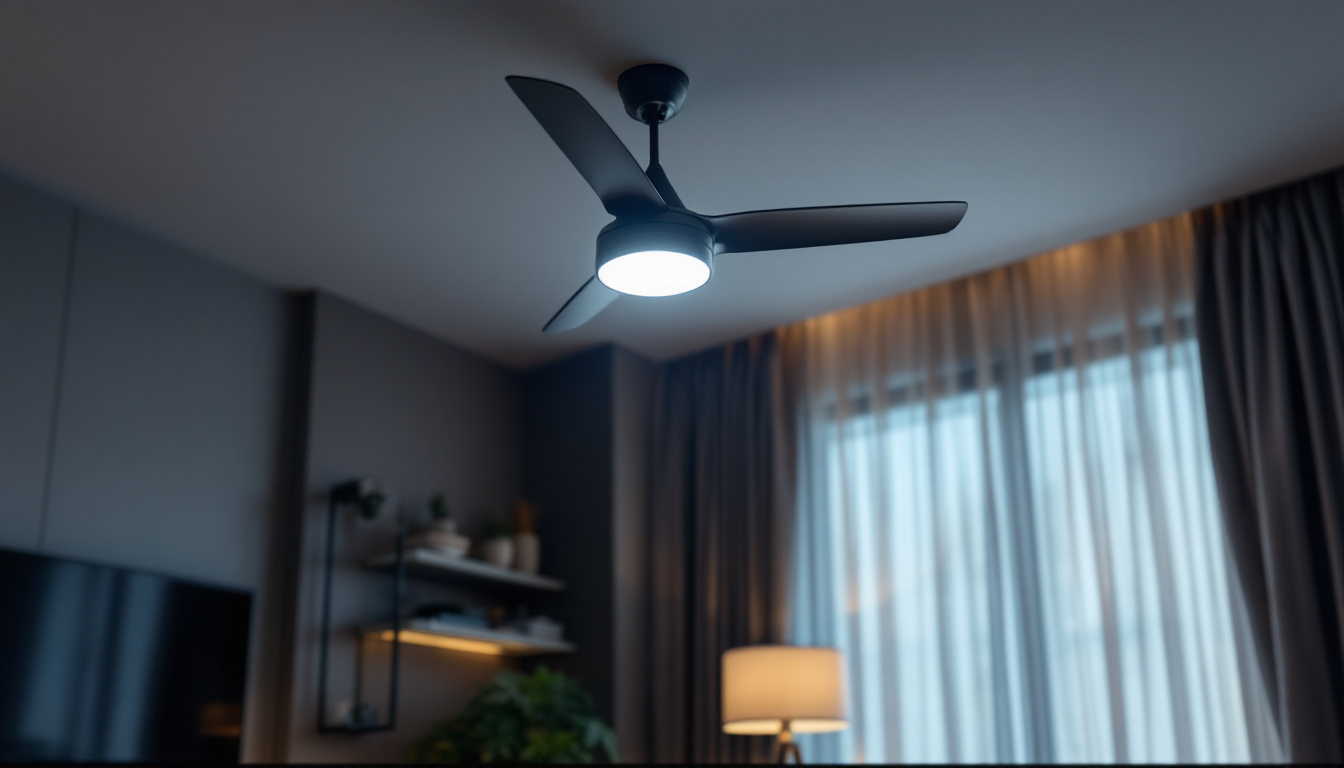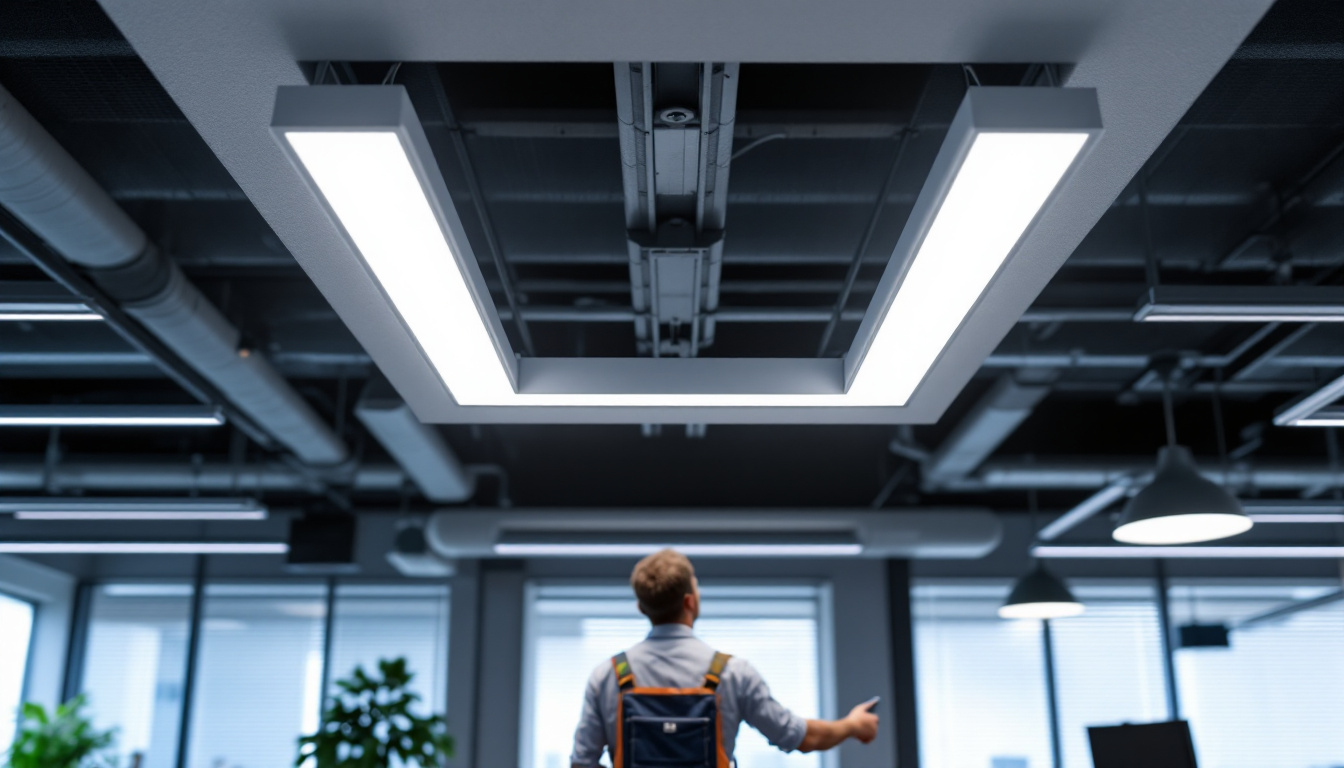

In the ever-evolving world of lighting design and installation, the integration of fans and light fixtures is becoming increasingly popular. This trend not only enhances aesthetic appeal but also improves functionality and energy efficiency. As lighting contractors, understanding the future of this dual approach is crucial for staying competitive and meeting client expectations. This article explores innovative designs, technological advancements, and the benefits of combining fans and lights in modern spaces.
The fusion of fans and lighting is not merely a trend; it represents a shift towards more versatile and stylish solutions. Designers are now focusing on creating fixtures that serve multiple purposes, allowing for a seamless blend of functionality and aesthetics.
ceiling fans have long been a staple in home and commercial design, but the introduction of integrated lighting has transformed them into multifunctional pieces. Modern ceiling fans come equipped with LED lights that provide ample illumination while maintaining energy efficiency. This design choice allows for a cohesive look, eliminating the need for separate light fixtures and reducing clutter.
Moreover, these integrated systems often feature adjustable brightness and color temperature settings, enabling users to customize their lighting experience. This adaptability not only enhances comfort but also contributes to energy savings, as users can adjust the lighting according to their needs. Additionally, many contemporary ceiling fans now incorporate smart technology, allowing users to control their fans and lights via mobile apps or voice commands, further enhancing convenience and user experience.
Wall-mounted fans are gaining traction in contemporary design, especially in spaces where floor or ceiling installations may not be feasible. These fans can be designed with ambient lighting, creating a striking visual element that enhances the overall decor. The combination of airflow and illumination can transform a room, providing both comfort and style.
Incorporating wall-mounted fans with integrated lighting can also open up new opportunities for lighting contractors. These fixtures can be used in various settings, from residential homes to commercial spaces, allowing for creative installations that cater to a wide range of client preferences. Furthermore, the aesthetic appeal of these fans can be tailored to suit different interior styles, from sleek and modern to rustic and vintage, ensuring that they can seamlessly blend into any environment. As designers continue to explore innovative materials and finishes, the potential for unique and eye-catching designs only expands, making these fixtures not just functional, but also a focal point in any room.
As technology continues to advance, the integration of fans and lighting is becoming smarter and more efficient. The emergence of smart home systems has revolutionized how these fixtures operate, providing users with enhanced control and convenience.
Smart technology has made it possible to control both fans and lights through a single interface, such as a smartphone app or voice-activated assistant. This level of automation allows users to set schedules, adjust settings, and create customized lighting and airflow scenarios. For instance, a homeowner can program their ceiling fan to operate at a specific speed while dimming the lights for movie night, all with a simple voice command.
For lighting contractors, offering smart integration options can be a significant selling point. As more clients seek convenience and efficiency, being knowledgeable about the latest smart technologies can enhance service offerings and attract a broader clientele. Furthermore, the ability to integrate with other smart home devices, such as security systems and thermostats, creates a holistic approach to home automation. This interconnectedness not only elevates the user experience but also fosters a sense of security and comfort, as homeowners can monitor and control their environment from virtually anywhere.
Energy efficiency is a critical consideration in modern lighting design. The combination of fans and lights can lead to significant energy savings, particularly with the use of LED technology. LED bulbs consume less energy than traditional incandescent bulbs while providing the same level of brightness. When paired with energy-efficient fans, the overall energy consumption of a space can be drastically reduced.
Additionally, many manufacturers are now focusing on sustainable materials and production processes. This shift towards eco-friendly practices not only appeals to environmentally conscious consumers but also positions lighting contractors as leaders in sustainable design. Innovations such as solar-powered lighting systems and fans equipped with energy-saving sensors are gaining traction, allowing users to harness renewable energy sources. Moreover, the use of recyclable materials in manufacturing processes contributes to reducing waste and promoting a circular economy, further enhancing the appeal of these advanced systems to eco-conscious consumers.
The integration of fans and lighting offers numerous benefits that can enhance the overall experience of a space. Understanding these advantages can help lighting contractors make informed recommendations to clients.
Combining fans with lighting creates a more comfortable environment by improving air circulation and providing adequate illumination. In spaces where both temperature control and lighting are essential, this dual approach can significantly enhance the user experience. For example, in a living room, a ceiling fan with integrated lighting can provide a cozy atmosphere while ensuring comfort during warmer months.
Moreover, this combination allows for greater flexibility in design. Lighting contractors can create unique installations that cater to the specific needs of their clients, whether it’s for residential or commercial applications. This adaptability can lead to increased customer satisfaction and repeat business. Additionally, the aesthetic appeal of a well-designed fan and light fixture can serve as a focal point in a room, enhancing the overall decor. For instance, a stylish pendant light with a built-in fan can elevate the ambiance of a dining area, making it an inviting space for family gatherings or entertaining guests.
Integrating fans and lights can also be a cost-effective solution for clients. By reducing the number of separate fixtures needed, clients can save on both installation and maintenance costs. Furthermore, the energy savings associated with using efficient lighting and fans can lead to lower utility bills over time, making this combination an attractive option for budget-conscious consumers.
For lighting contractors, emphasizing the long-term financial benefits of integrated systems can be a compelling selling point. Clients are often looking for ways to save money, and highlighting the cost-effectiveness of these solutions can help close sales. Additionally, many modern fans and lights come equipped with smart technology, allowing users to control their settings via smartphone apps or voice commands. This not only adds convenience but can also optimize energy usage, further enhancing savings. As consumers become more environmentally conscious, promoting the sustainability aspect of energy-efficient fans and lights can also resonate well with clients, making these integrated systems even more appealing.
As the industry evolves, several design trends are emerging that will shape the future of lighting and fan integration. Staying informed about these trends can help lighting contractors remain competitive and relevant in the marketplace.
The minimalist design trend emphasizes simplicity and functionality. This approach is reflected in the design of fans and lights, with sleek lines and unobtrusive profiles becoming increasingly popular. Minimalist fixtures can blend seamlessly into a variety of interior styles, making them versatile choices for contractors.
Incorporating minimalist designs into projects can also appeal to clients who prefer a clean and uncluttered aesthetic. Lighting contractors who understand and embrace this trend can offer solutions that resonate with modern sensibilities.
On the opposite end of the spectrum, industrial and vintage styles are making a significant comeback. Fans and lights that feature exposed bulbs, metal finishes, and retro designs are gaining popularity in both residential and commercial spaces. This trend allows for creative expression and can add character to any setting.
For lighting contractors, understanding the nuances of these styles can open up new avenues for design. By offering a range of options that cater to different aesthetic preferences, contractors can appeal to a broader audience and enhance their portfolio.
While the benefits of combining fans and lights are clear, there are also important installation considerations that lighting contractors must keep in mind. Proper installation is crucial for ensuring safety, functionality, and aesthetic appeal.
When integrating fans and lights, it is essential to consider the electrical requirements of each fixture. Fans typically require a dedicated circuit, especially if they include additional features such as remote controls or integrated lighting. Lighting contractors must ensure that the existing electrical infrastructure can support the new installations.
Moreover, understanding local building codes and regulations is vital for compliance and safety. Contractors should stay updated on any changes to electrical codes to avoid potential issues during installation.
Another critical consideration is the weight of the fixtures. Ceiling fans, in particular, can be heavy, and proper support is necessary to prevent accidents and ensure longevity. When installing integrated systems, contractors should assess the structural integrity of the mounting surface and use appropriate hardware to secure the fixtures.
In some cases, additional reinforcement may be required to accommodate the weight of both the fan and the light. Taking these precautions will not only enhance safety but also contribute to the overall success of the installation.
The integration of fans and lights represents a significant advancement in lighting design and installation. As technology continues to evolve, lighting contractors have the opportunity to offer innovative solutions that enhance comfort, efficiency, and aesthetics.
By staying informed about design trends, technological advancements, and installation considerations, contractors can position themselves as leaders in the industry. The future of lighting design is bright, and those who embrace the combination of fans and lights will be well-equipped to meet the demands of a changing marketplace.
Ready to lead the future of lighting design with the innovative integration of fans and lights? At LumenWholesale, we provide lighting contractors like you with the highest quality, spec-grade lighting products at unbeatable wholesale prices. Our extensive selection is designed to meet the highest industry standards, ensuring you deliver reliable and high-performance lighting solutions for every project. With free shipping on bulk orders, you can trust LumenWholesale to supply premium lighting at the best value — without hidden fees or compromises. Elevate your lighting installations today by visiting Wholesale Lighting at the Best Value and experience the perfect blend of quality, affordability, and convenience.

Discover the transformative impact of 2X2 LED drop ceiling lights on modern lighting projects.

Discover how sourcing lighting products wholesale can give lighting contractors a competitive edge in bidding.

Discover innovative strategies for selecting and installing exhaust fans in your shop with insights from expert lighting contractors.

Discover why purchasing light bulbs and LED tubes in bulk from local distributors might not be the best choice.
Get notified when NEW deals are released.
Optimize your budget with wholesale discounts.
Only top-quality, specification-grade lighting products.
No additional costs at checkout - what you see is what you pay.
We understand the unique needs of contractors.